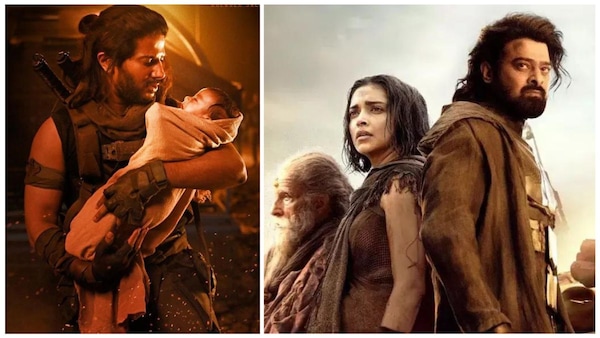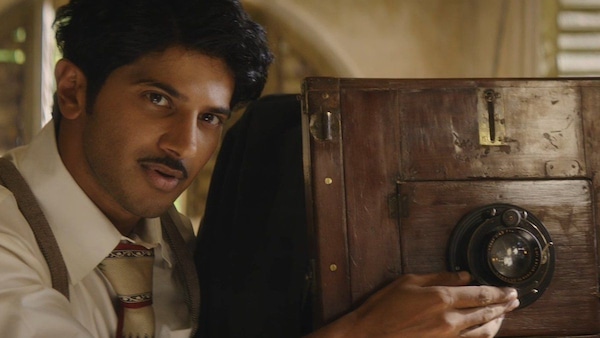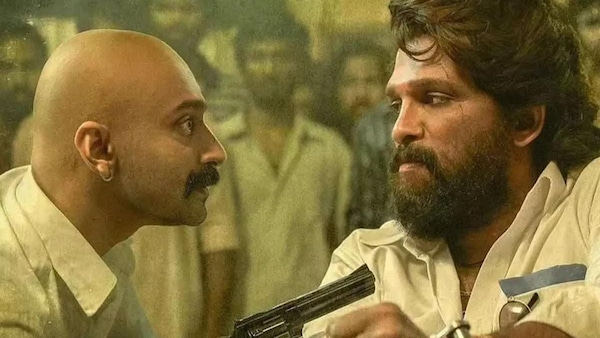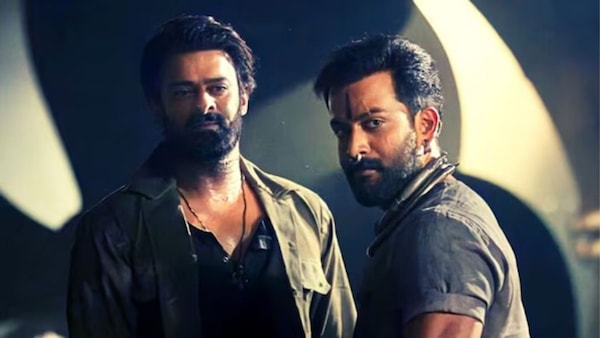South Indian Cinema & The Rise Of Creative Crossover Collaborations Across Languages
What explains this sudden crossover interest between Malayalam and Telugu cinema, considering they are diametrically different in aesthetics, sensibilities, and storytelling?

Last Updated: 02.11 PM, Jul 18, 2024
RECENTLY a video surfaced on social media that had Dulquer Salmaan getting mobbed by college students at the location of his Telugu film, Lucky Bhaskar in Hyderabad. It emphasizes the rising popularity of Dulquer Salmaan outside Kerala and points towards a pleasant trend in Telugu cinema. Some of the biggest Telugu movie production houses are eager to rope in Malayalam stars in their films. Vyjayanthi Movies has announced a new film with Dulquer Salmaan, directed by Pawan Sadineni. In contrast, Producer Shobhu Yarlagadda has announced two new films with Fahadh Faasil, titled Don’t Trouble the Trouble and Oxygen. And SS Rajamouli’s son SS Karthikeya who earlier distributed Fahad Fasil Productions Premalu in Telugu will be backing both films, which debutant directors will helm. Meanwhile, Prithviraj Sukumaran will be joining the sets of Prashant Neel’s Salaar 2 in August, in which he shares equal billing with Prabhas. Not only that the young Malayalam superstars are also upping the Telugu-Malayalam nexus further by distributing Telugu films in Malayalam through their production houses. Nag Aswin’s ambitious spectacle Kalki 2898 AD was picked by Dulquer’s Wayfarer Productions and Prithviraj Productions did the same for Salaar in Kerala. What explains this sudden crossover interest between Malayalam and Telugu cinema, considering they are diametrically different in aesthetics, sensibilities, and storytelling?
How did it start?
Though the dubbed Malayalam films of Mammootty and Mohanlal had tasted success among the Telugu audience, both actors haven’t explored the terrain as they did with Tamil cinema. When auteur K Viswanath chose Mammootty to play a celebrated Carnatic singer who kills his shishya out of jealousy in Swathi Kiranam (1992), it was an indication of how Telugu filmmakers perceived Malayalam cinema and its actors. Not only was it challenging to play the character, but the narrative also stepped away from the mainstream. Thus Mammootty became one of the first superstars in Malayalam to play a leading man in Telugu. The actor, then in his early 40s, not only aced the nuances of a character (shown in his 40s and 60s) completely alien to him, but also effortlessly passed the language test. It is said that when K Viswanath asked singer SP Balasubramaniam to dub for Mammootty, the actor insisted on doing it himself. But it took nearly two decades after a vapid Surya Puthralu (1997) in which the actor played a fiery police officer coping with a personal tragedy to make a reentry into Telugu. Again like his debut, this was for a character that required an actor of his gravitas. In Yatra (2019), a biographical film on former Andhra Pradesh CM YSR Reddy, he played the titular character. It was Mammootty’s mastery of his craft that elevated this propaganda film. Though he made two appearances soon after (a cameo in Yatra 2 and an antagonist in Agent), they failed to create any murmur at the box office.

His peer Mohanlal, except appearing in a song in friend Priyadarshan's Balakrishna-headlined Gandeevam (1994), took two decades to foray into Telugu cinema. The otherwise prosaic revenge drama was salvaged to a large extent by Mohanlal’s subtlety, as he slipped into the role of a Vito Corleone-like character in Janatha Garaja (2016). The same year, he played an ordinary man grappling with challenging situations in the middling Manamantha (2016).
Apart from the two leading superstars, Jayaram despite during more Telugu films (Ala Vaikunthapurramuloo, Hi Ninna, Guntur Kaaram) in the recent past has been saddled with inconsequential father roles.
What turned the tables?
When Nag Ashwin was scouting for an actor to play Gemini Ganeshan in Mahanati, he wanted a non-Telugu actor to play the part. “Gemini Ganeshan was charming and irresistible. We needed someone like that. And Dulquer Salmaan was on our wish list,” says Aswin. For the actor, though he found the story intriguing, he was wary of the language. “With Dulquer, his first scene was the monologue after Keerthy bangs her head while shooting for Devdas. He was effortless. He came on board purely because he was piqued about the period phase of the film,” admits Ashwin in an online interview. Dulquer chose not to imitate the thespian but made it his own, manifesting the veteran actor's tagline of 'Kaadhal Mannan' effortlessly into his performance. It was easily one of his best acts yet.

He further cemented his popularity soon after with the stupendous success of the Romeo-Julietisque period romance Sita Ramam (grossed over 90 crores at the box office). In an industry that heavily rests on ancestry, where every reigning superstar might find his roots in an extended film family tree, Dulquer’s popularity can be deemed significant. Even in Nag Aswin’s ambitious spectacle Kalki 2898 AD, Dulquer Salmaan’s cameo was immensely hyped up, as much as that of Vijay Devarakonda’s. Of course, Malayalam cinema benefited hugely during the OTT boom which helped them reach out to a larger audience outside Kerala.
“The size of the Malayalam audience is small compared to other languages, so I don't think filmmakers rope in Malayalam actors only to fit the pan-Indian formula as it happens quite often. It's more to do with the acting talent and willingness to push boundaries. I also believe the current crop of Malayalam stars have better language skills and can dub without a heavy Malayalam accent. This also helps them play the role authentically,” observes Sowmya Rajendran, film critic.
Since voice was always a large part of the identity of all our leading South Indian superstars, Dulquer Salmaan or Fahad Faasil’s ability to pull off languages (Tamil, Telugu, Hindi) without a trace of an accent can easily be a reason for being sought-after. None of our veteran superstars could ace that test, including the versatile Kamal Haasan. Fahadh Faasil’s debut in Pushpa, where his baldheaded, ruthless cop Bhanwar Singh Shekhawat IPS matches wits with the local drug baron Pushpa (Allu Arjun) is proof of his ease with the language among other things.

“Dulquer can speak Tamil like a Tamilian, Telugu like a person from Andhra, and Hindi like a North Indian. So yes, he has got that gift,” observed R Balki during the promotional interview of Chup.
One reason why heroines crossover was smoother and less discussed has also got to do a lot with the fact that most of them relied on a dubbing artist and having a distinctive voice was never in contention. Back in the 90s, even a talent like Urvashi was encouraged to use a dubbing artist as her voice wasn’t “sweet” enough. Also, whichever Malayalam female actors have tried their luck in other languages have mostly done generic heroine roles.
Also, Dulquer, Fahad, Tovino, Prithviraj, or even Shane Nigam can be placed anywhere in India. Another fact that has worked in their favour is that none of these actors carries the baggage of superstardom with them. Even back home, Dulquer, Fahad, or Tovino Thomas have always gone for ordinary, flawed characters, so they are more open to experimenting in other languages as well.
“I don’t think any big A-list actor from the South has committed himself to that level, except for leading heroines. They have not taken an effort to uproot themselves from their home turf and settle there,” Prithviraj Sukumaran had told this writer when asked about male actors from the South not making it big in Bollywood. One can perhaps say the same about Mammootty or Mohanlal not finding their feet in Tamil or Telugu.
Prithviraj Productions is also one of the earlier players to proactively go for the distribution rights of Tamil, Hindi, and Kannada films in Kerala (Petta, Bigil, Master, 83, Kantara, KGF: Chapter 2). It not only paved the way for strengthening professional ties across industries but also created newer partnerships on celluloid. It led to the actor’s first collaboration with Prashant Neel in Salaar Part 1- Ceasefire. His magnum opus Aadujeevitham was distributed by Prithviraj Productions in Kerala, Hombale Films in Karnataka, Mythri Movie Makers in Andhra Pradesh and Telangana, Red Giant Movies in Tamil Nadu and AA Films in North India.

Similarly, Dulquer Salmaan with Kurup, pulled out all the stops in marketing its dubbed versions (the actor himself dubbed in Hindi, Kannada, Tamil, and Telugu) in all major cities. Perhaps he took notes from his stint in Bollywood, where films are marketed aggressively unlike in Malayalam. Prithviraj picked up the trend and did the same with Jana Gana Mana, Kaduva, and Aadujeevitham. SS Rajamouli’s son SS Karthikeya expressing interest in taking the Telugu distribution rights of Premalu has more to do with their admiration for Fahadh Faasil the actor than just the film’s credentials alone. His associations in Tamil and Telugu played a key role in bringing such fruitful partnerships for Malayalam cinema. “Malayalam films tend to have modest budgets and the big money is in Hindi, Tamil, and Telugu, so it made sense for Malayalam stars also to expand their filmography into other industries,” observes Rajendran.
Such creative crossover collaborations across South Indian languages can only be beneficial as each industry has its USPs to boast of. If Telugu cinema is big on ambitious spectacles, Tamil cinema does a blend of larger-than-life narratives and experimental films, Kannada cinema is still trying to find its niche and as for Malayalam cinema, small, realistic, original stories will always be its stronghold. Anyway, it would be a win-win situation for the audiences.
